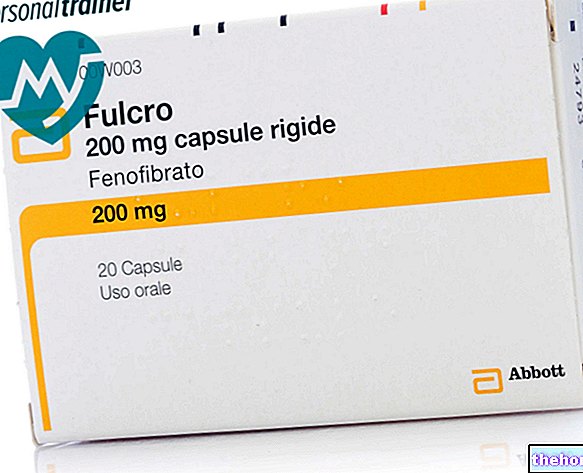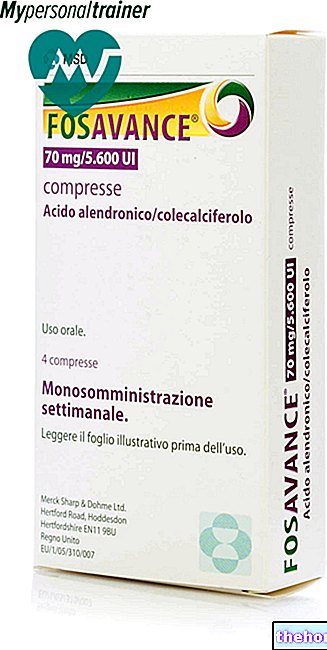Active ingredients: Mepivacaine
MEPIVACAINE ANGELINI 10 mg / ml solution for injection
MEPIVACAINE ANGELINI 20 mg / ml solution for injection
Why is Mepivacaine used - Generic drug? What is it for?
Mepivacaine Angelini contains mepivacaine hydrochloride, a medicine belonging to the anesthetic group of medicines.
Mepivacaina Angelini is used in adults and children for local anesthesia (which affects only certain parts of the body).
Contraindications When Mepivacaine should not be used - Generic drug
You will not be given Mepivacaine Angelini
- if you are allergic to mepivacaine hydrochloride or any of the other ingredients of this medicine (listed in section 6).
- If you are allergic to other local anesthetics and / or other similar substances (local anesthetics of the amide type). - If you are pregnant or suspect that you are pregnant.
Precautions for use What you need to know before taking Mepivacaine - Generic drug
Talk to your doctor or nurse before you are given Mepivacaine Angelini.
Before use, your doctor will make sure that you are not taking MAO drugs (monoamine oxidase inhibitors) or tricyclic antidepressants, used to treat depression and conditions of your blood circulation.
Interactions Which drugs or foods can modify the effect of Mepivacaine - Generic drug
Tell your doctor or nurse if you are taking, have recently taken or might take any other medicines. In particular, tell your doctor if you are taking:
- MAOIs (monoamine oxidase inhibitors) or tricyclic antidepressants, used to treat depression.
Warnings It is important to know that:
Pregnancy and breastfeeding
If you are pregnant, think you may be pregnant or are planning to have a baby or are breast-feeding, please tell your doctor before you are given this medicine.
Pregnancy
Mepivacaine Angelini will not be given to you if you are pregnant or suspected of being pregnant (see section "You will not be given Mepivacaine Angelini").
Driving and using machines
Local anesthetics can have a very mild effect on mental function and coordination, and can temporarily adversely affect range of motion and alertness.
Mepivacaine Angelini contains sodium
This medicinal product contains less than 1 mmol (23 mg) sodium per dose, ie it is essentially "sodium-free".
Dose, Method and Time of Administration How to use Mepivacaine - Generic drug: Posology
The dose will be determined by your doctor based on your weight and state of health. Mepivacaine Angelini will be administered to the affected part of the body by a doctor who specializes in the use of this type of medicine, in adequately equipped facilities.
Use in children
The specialist doctor will determine the dose to be administered based on the weight of the child.
If you stop taking Mepivacaine Angelini
If you have any further questions on the use of this medicine, ask your doctor or pharmacist.
Overdose What to do if you have taken an overdose of Mepivacaine - Generic drug
It is very unlikely that you will be given more solution than you should as your doctor will monitor you during treatment. In case of excessive dosage, the doctor will immediately stop the administration and will start the most appropriate therapy based on your symptoms.
Side Effects What are the side effects of Mepivacaine - Generic drug
Like all medicines, Mepivacaina Angelini can cause side effects, although not everybody gets them.
If during the administration of Mepivacaine Angelini you experience the following serious side effects, your doctor will immediately STOP the administration at the first sign of alarm and will give you, when possible, the appropriate therapy to treat these symptoms of allergic reaction:
- skin rashes of various kinds, hives, itching
- temporary narrowing of the bronchi that prevents air from passing into the lungs (bronchospasm)
- swelling of the larynx (laryngeal edema)
- severe allergic reaction (anaphylactic shock).
Possible side effects are listed below:
Effects affecting the stomach and intestines
- nausea and vomit
Effects affecting the nervous system
- excitement, disorientation
- tremors
- dizziness
- dilation of the pupil (mydriasis)
- contracture of the jaw which makes it impossible to open the mouth (trismus)
- convulsions
Effects that affect the whole organism
- increased metabolism and body temperature
- sweating
Effects affecting the heart and blood circulation
- arrhythmias
- increased blood pressure (hypertension)
- decreased heart rate (bradycardia)
- increase in the diameter of blood vessels (vasodilation)
Effects affecting the bronchi and lungs
- increased breathing rate (tachypnea)
- increase in the diameter of the bronchi which favors the passage of air into the lungs (bronchodilation)
Reporting of side effects
If you get any side effects, talk to your doctor. This includes any possible side effects not listed in this leaflet. You can also report side effects directly via the national reporting system at www.agenziafarmaco.gov.it/it/responsabili. By reporting side effects you can help provide more information on the safety of this medicine.
Expiry and Retention
The solutions do not contain preservatives and must be used immediately after opening the vial. Any residual drug must be discarded.
Keep this medicine out of the sight and reach of children.
Do not use this medicine after the expiry date which is stated on the carton after EXP.
The expiry date refers to the last day of that month.
Do not throw any medicines via wastewater or household waste. Ask your pharmacist how to throw away medicines you no longer use. This will help protect the environment.
Other information
What Mepivacaine Angelini contains
- The active substance is mepivacaine hydrochloride 10 mg / ml or 20 mg / ml.
- The other ingredients are sodium chloride (see section "Mepivacaine Angelini contains sodium"), water for injections.
What Mepivacaine Angelini looks like and contents of the pack
Mepivacaine Angelini is presented as a clear and colorless solution for injection.
Mepivacaine Angelini 10 mg / ml and 20 mg / ml solution for injection is available in packs of
- 1 vial of 10 ml
- 1 vial of 5 ml
- 5 vials of 5 ml
- 5 vials of 10 ml
- 10 ampoules of 10 ml
Not all pack sizes may be marketed.
THE FOLLOWING INFORMATION IS INTENDED FOR DOCTORS OR HEALTHCARE PROFESSIONALS ONLY
PRECAUTIONS FOR USE
The anesthetic solution must be carefully injected in small doses approximately 10 seconds after a preventive aspiration. Especially when very vascularized areas have to be infiltrated, it is advisable to allow about 2 minutes to pass before proceeding with the actual locoregional block. The patient should be carefully monitored by discontinuing administration immediately at the first sign of alarm (e.g. change in the sensory).
It is always necessary to have the immediate availability of equipment, drugs and personnel suitable for emergency treatment since cases of severe reactions and sometimes with a fatal outcome have been reported, albeit rarely, after the use of local anesthetic drugs even in the absence of hypersensitivity.
The product should be used with absolute caution in subjects undergoing treatment with MAOIs or tricyclic antidepressants.
Before use, the doctor must ascertain the state of the circulatory conditions of the subjects to be treated. It is necessary to avoid any overdose of anesthetic and never administer two maximum doses of the latter without a minimum interval of 24 hours. However, it is necessary to use the lowest doses and concentrations that can allow to obtain the desired effect.
DOSE, METHOD AND TIME OF ADMINISTRATION
In the "healthy adult (not pre-treated with sedatives) the maximum dose in single administration or in several repeated administrations in less than 90 minutes, is 7 mg / kg, without ever exceeding 550 mg. The total dose in 24 hours does not it must never exceed 1000 mg; in pediatrics not exceed 5-6 mg / kg.
Recommended doses:
- Surgery
- Peridural and caudal block: up to 400 mg reached with 15-30 ml of a 1% solution or with 10-20 ml of a 2% solution.
- Paravertebral block: up to 400 mg with 1% solution for the stellate ganglion block and for vegetative blocks, at 1-2% for the paravertebral block of the somatic nerves.
- Peripheral cervical, brachial, intercostal, paracervical, pubendal and nerve endings nerve block: up to 400 mg achievable with 5-20 ml of 1% or 2% solution depending on the area and extent of the block.
- Infiltration: up to 400 mg in relation to the area of the intervention, obtainable with variable volumes up to 40 ml of a 0.5% -1% solution.
Obstetrics
- Paracervical block: up to 200 mg within a 90 minute period obtainable with 10 ml of a 1% solution on each side.
Warning: the vials do not contain paraseptic excipients should be used for a single administration. Any inventories will be discarded.
OVERDOSE
At the first sign of alarm it is necessary to interrupt the administration, place the patient in a horizontal position and ensure the patency of the airways by administering oxygen in case of severe dyspnea by performing artificial ventilation (Ambu bag).
The use of bulbar analeptics should be avoided in order not to aggravate the situation by increasing the consumption of oxygen. Possible convulsions can be controlled with the use of diazepam in a dose of 10-20 mg intravenously; barbiturates, which can accentuate bulbar depression, are not recommended. The circulation can be sustained by administering cortisone drugs in appropriate intravenous doses; dilute solutions of alpha-beta-stimulants with vasoconstrictive action (mefentermin, metaraminol and others) or of atropine sulphate can be added. Sodium bicarbonate in a targeted concentration, intravenously, can be used as an antacid.
Source Package Leaflet: AIFA (Italian Medicines Agency). Content published in January 2016. The information present may not be up-to-date.
To have access to the most up-to-date version, it is advisable to access the AIFA (Italian Medicines Agency) website. Disclaimer and useful information.
01.0 NAME OF THE MEDICINAL PRODUCT
MEPIVACAINA ANGELINI
02.0 QUALITATIVE AND QUANTITATIVE COMPOSITION
Each 10 ml vial of Mepivacaine 1% contains:
Active ingredient: Mepivacaine hydrochloride 100 mg
Each 5ml vial of Mepivacaine 1% contains:
Active ingredient: Mepivacaine hydrochloride 50 mg
Each 10 ml vial of Mepivacaine 2% contains:
Active ingredient: Mepivacaine hydrochloride 200 mg
Each 5ml vial of Mepivacaine 2% contains:
Active ingredient: Mepivacaine hydrochloride 100 mg
03.0 PHARMACEUTICAL FORM
Solution for injection for parenteral use.
04.0 CLINICAL INFORMATION
04.1 Therapeutic indications
Mepivacaine Angelini is indicated in general surgery, obstetrics and gynecology, urology, ophthalmology, dermatology, otolaryngology, orthopedics, as well as in general and sports medicine, with the following anesthetic techniques: peridural and caudal block, paravertebral block, peripheral nerve block, paracervical, tissue infiltration.
04.2 Posology and method of administration
In the "healthy adult, not pretreated with sedatives, the maximum dose, in single administration or in several repeated administrations in less than 90 minutes, is 7 mg / kg of mepivacaine hydrochloride, without ever exceeding 550 mg. The total dose in 24 hours it must never exceed 1000 mg; in pediatrics it must not exceed 5-6 mg / kg.
Recommended doses:
Surgery:
Peridural and caudal block: up to 400 mg which can be reached with 15-30 ml of a 1% solution or with 10-20 ml of a 2% solution.
Paravertebral block: up to 400 mg with 1% solution for the stellate ganglion block and vegetative blocks, at 1-2% for the parevertebral block of the somatic nerves.
Peripheral cervical, brachial, intercostal, paracervical, pubendal and nerve endings peripheral nerve block: up to 400 mg achievable with 5-20 ml of 1% or 2% solution in relation to the area and the extent of the block.
Infiltration: up to 400 mg in relation to the area of the intervention, obtainable with variable volumes up to 40 ml of a 0.5% -1% solution.
Obstetrics:
Paracervical block: up to 200 mg within a 90 minute period obtainable with 10 ml of a 1% solution for each side.
Attention: the ampoules do not contain paraseptic excipients must be used for a single administration. Any inventories will be discarded.
04.3 Contraindications
Hypersensitivity to components or other closely related substances from a chemical point of view; in particular towards local anesthetics of the same group (amide type). Contraindicated in confirmed or presumed pregnancy.
04.4 Special warnings and appropriate precautions for use
The anesthetic solution must be carefully injected in small doses approximately 10 seconds after a preventive aspiration. Especially when very vascularized areas have to be infiltrated, it is advisable to let about two minutes pass before proceeding to the actual loco-regional block.
The patient should be carefully monitored by discontinuing administration immediately at the first sign of alarm (e.g. change in the sensory).
It is always necessary to have the immediate availability of equipment, drugs and personnel suitable for emergency treatment since cases of serious reactions and sometimes with a fatal outcome have been reported, albeit rarely, after the use of local anesthetic drugs even in the absence of hypersensitivity.
The product should be used with absolute caution in subjects undergoing treatment with MAOIs or tricyclic antidepressants.
Before use, the doctor must ascertain the state of the circulatory conditions of the subjects to be treated. It is necessary to avoid any overdose of anesthetic and never administer two maximum doses of the latter without a minimum interval of 24 hours. However, it is necessary to use the lowest doses and concentrations that can allow to obtain the desired effect.
04.5 Interactions with other medicinal products and other forms of interaction
No interactions with other drugs are known.
However, caution should be exercised in subjects being treated with MAOIs or tricyclic antidepressants.
04.6 Pregnancy and breastfeeding
Not to be used in known or suspected pregnancy.
04.7 Effects on ability to drive and use machines
At the recommended doses the drug does not significantly and for a long time affect the attention span.
04.8 Undesirable effects
Toxic and allergic reactions can occur due to the action of the local anesthetic.
Among the former phenomena of central nervous stimulation are reported with excitement, tremors, disorientation, dizziness, mydriasis, increased metabolism and body temperature and, for very high doses, trismus and convulsions; if the medulla oblongata is involved, there is a sharing of the cardiovascular, respiratory and emetic centers with sweating, arrhythmias, hypertension, tachypnea, bronchodilation, nausea and vomiting. Peripheral effects can affect the cardiovascular system with bradycardia and vasodilation. Allergic reactions occur mostly in hypersensitive subjects, but many cases are reported with no individual hypersensitivity to the anamnesis. Local manifestations include various types of skin rashes, urticaria, itching; those of a general nature bronchospasm, laryngeal edema up to cardiorespiratory collapse from anaphylactic shock.
04.9 Overdose
At the first sign of alarm it is necessary to interrupt the administration, place the patient in a horizontal position and ensure the patency of the airways by administering oxygen in case of severe dyspnea or by carrying out artificial ventilation (Ambu bag).
The use of bulbar analeptics should be avoided in order not to aggravate the situation by increasing the consumption of oxygen. Possible convulsions can be controlled with the use of diazepam in a dose of 10-20 mg intravenously; barbiturates, which can accentuate bulbar depression, are not recommended. The circulation can be sustained by administering cortisone drugs in appropriate doses by the intravenous route; dilute solutions of alpha-beta-stimulants with vasoconstrictive action (mefentermin, metaraminol and others) or of atropine sulphate can be added. As antacidosic, sodium bicarbonate can be used in suitable concentrations, intravenously.
05.0 PHARMACOLOGICAL PROPERTIES
05.1 Pharmacodynamic properties
The active ingredient of Mepivacaine Angelini is mepivacaine, a loco-regional anesthetic of the amide type.
Mepivacaine prevents both the generation and the production of the nerve impulse and its main site of action is the cell membrane where it exerts, at the concentrations used to obtain local anesthesia, a modest direct action on the axoplasm. Mepivacaine blocks conduction by decreasing or preventing the large transient increase in membrane permeability to sodium ions that is caused by a slight depolarization of the membrane. The anesthetic effect sets in rapidly and the duration of action is medium to long.
05.2 Pharmacokinetic properties
The drug binds to plasma proteins. The time of maximum plasma concentration varies according to the type of block for which it is used; most of the time it is however within 30 minutes. The drug is metabolized in the liver and quantities of less than 10% are eliminated in unchanged form. Excretion occurs mainly via the kidneys and only in modest quantities via the faeces.
05.3 Preclinical safety data
The LD50s calculated in acute toxicity studies in mice, rabbits and guinea pigs are shown below.
Topo s.c. 260 mg / kg, rabbit SC 110 mg / kg; mouse i.v. 40 mg / kg; guinea pig e.p. 173 mg / Kg. In the repeated treatments performed on mice and rats, no phenomena attributable to the toxicity of the preparation emerged.
06.0 PHARMACEUTICAL INFORMATION
06.1 Excipients
Sodium chloride; water for injections.
06.2 Incompatibility
None known.
06.3 Period of validity
The validity of the intact packaged product is 3 years.
06.4 Special precautions for storage
Do not use the medicine after the expiration date.
06.5 Nature of the immediate packaging and contents of the package
5 and 10 ml colorless glass vials
Packs of 10 ampoules of 10 ml at 1% and 2%
Packs of 1 vial of 10 ml at 1% and 2%
Packs of 5 ampoules of 10 ml at 1% and 2%
Packs of 5 ampoules of 5 ml at 1% and 2%
Packs of 1 vial of 5 ml at 1% and 2%
06.6 Instructions for use and handling
It does not compete.
07.0 MARKETING AUTHORIZATION HOLDER
United Chemical Companies Angelini francesco - A.C.R.A.F. S.p.A.
Viale Amelia, 70, 00181 ROME
08.0 MARKETING AUTHORIZATION NUMBER
10 ampoules of 10 ml at 1% AIC n. 029233018
10 ampoules of 10 ml at 2% AIC n. 029233020
1 vial of 10 ml at 1% AIC n. 029233032
1 vial of 10 ml at 2% AIC n. 029233044
5 ampoules of 10 ml at 1% AIC n. 029233057
5 vials of 10 ml at 2% AIC n. 029233069
5 ampoules of 5 ml at 1% AIC n. 029233071
5 vials of 5 ml at 2% AIC n. 029233083
1 vial of 5 ml at 1% AIC n. 029233095
1 vial of 5 ml at 2% AIC n. 029233107
09.0 DATE OF FIRST AUTHORIZATION OR RENEWAL OF THE AUTHORIZATION
04/08/1995
10.0 DATE OF REVISION OF THE TEXT
27/03/2007




























